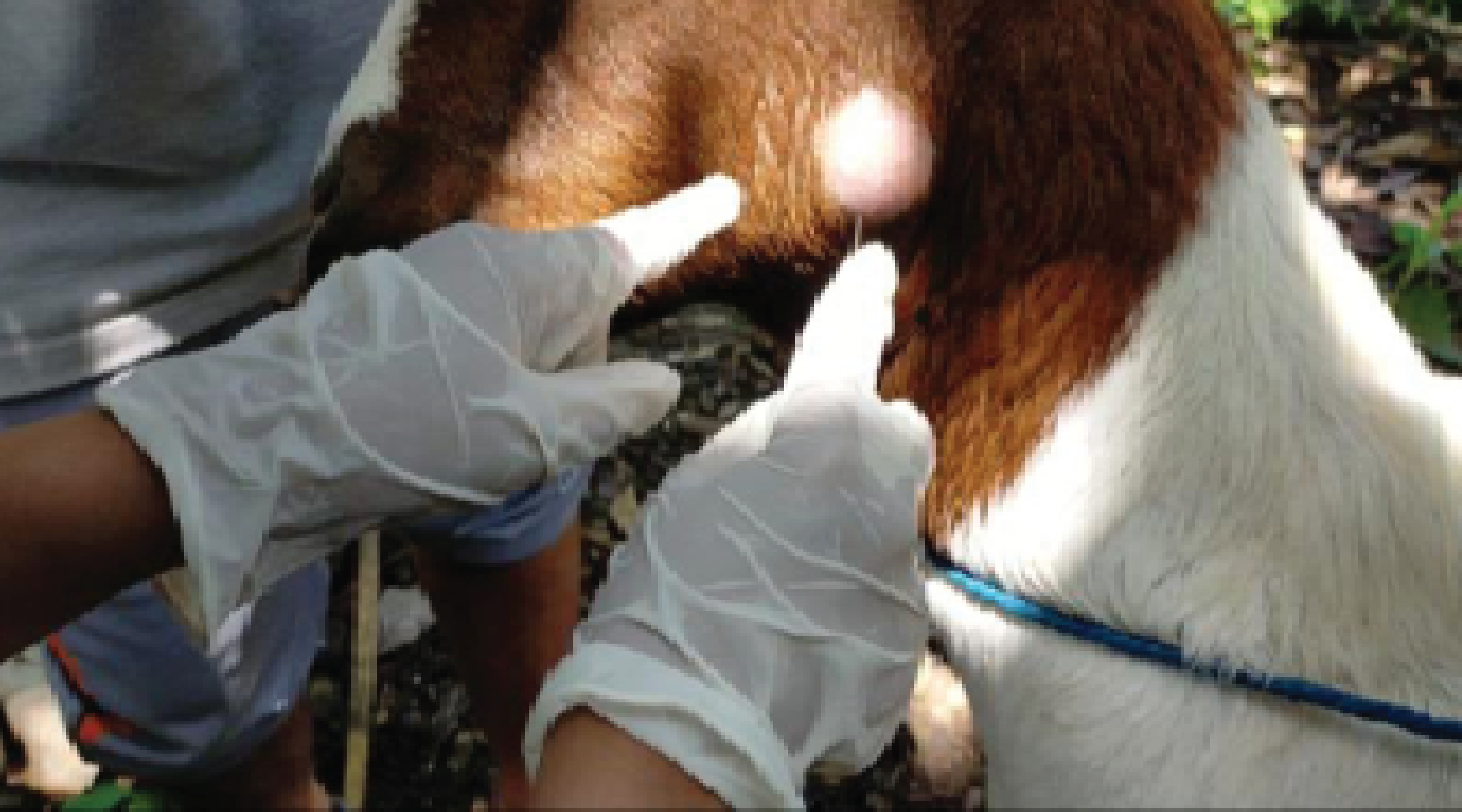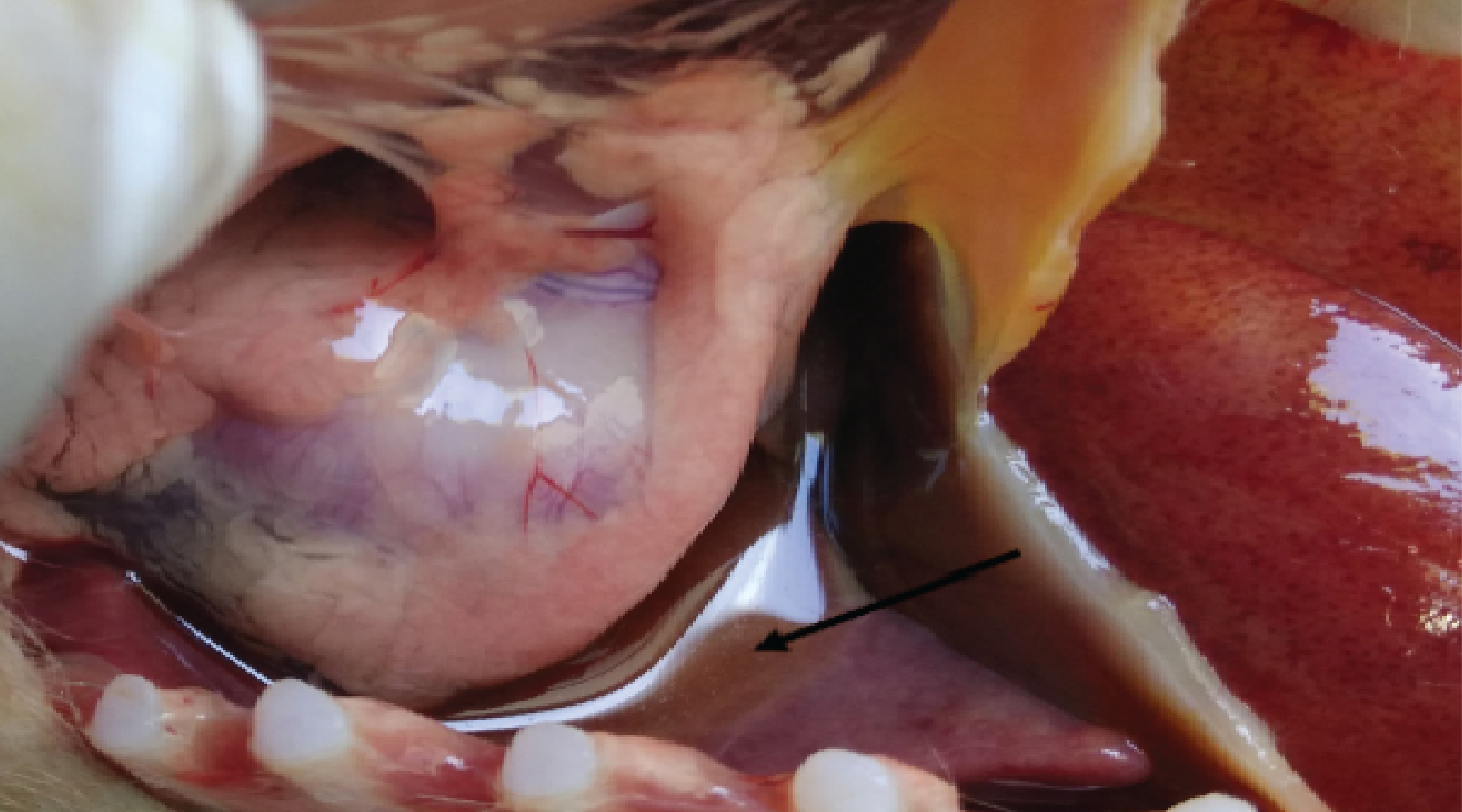Occurrence of Aeromonas spp. Resistant to Some Selected Antibiotics Isolated from Farmed Clarias gariepinus

Downloads
Background: One of the major causes of disease in Clarias gariepinus is Aeromonas spp. which has been linked to significant economic losses and poses a risk to public health. Purpose: The prevalence and heterogeneity of Aeromonas species isolated from Clarias gariepinus cultured in concrete tanks, as well as the antibiogram and multiple antibiotic resistance index, were examined. Methods: In this study, using culture, biochemical characterization, and Microbact 24E kit, Aeromonas species isolates were confirmed. The Kirby Bauer disc diffusion method assessed the antibiotic susceptibility to 10 different antibiotics. Results: Four different species of Aeromonas were identified, with an overall prevalence of 55 (28.6%). Aeromonas hydrophila had the highest prevalence of 35 (18.6%), followed by 10 (5.2%) for Aeromonas caviae, then 5 (2.6 %) for Aeromonas veronii biovar sobria, and Aeromonas veronii biovar veronii, respectively. The Aeromonas species exhibited high resistance to amoxicillin, ampicillin, colistin sulphate, oxytetracycline, trimethoprim/sulphamethoxazole, and penicillin, with varied patterns of resistance, and the multiple antibiotic resistance (MAR) index values ranged between 0.10 and 0.80. Conclusion: Several antibiotic-resistant Aeromonas species were linked to the widespread emergence of antimicrobial resistance. As a result, it is crucial to regulate the use of antibiotics in fish farms and to ensure that biosecurity and preventive management strategies are applied effectively.
Adah, A.D., Saidu, L., Oniye, S.J., Kazeem, H.M., and Adah, S.A., 2021. Prevalence and Risk Factors Associated with Aeromonas hydrophila infection in Clarias gariepinus and Pond Water from Fish Farms in Kaduna State, Nigeria. Jordan Journal of Biological Sciences, 14 (3), 477–484.
Adah, D.A., Saidu, L., Oniye, S.J., and Adah, A.S., 2022. An Assessment of The Impacts of Biosecurity Measures on Mortality of Fish From Fish Farms. Aquaculture Studies, 23 (5), 1–9.
Adah, D.A., Saidu, L., Sonnie, O., Adakole, A., Susan, D., and Omodolapo, O., 2022. Antibiotic Resistance Patterns of Bacteria Isolated From Clarias gariepinus Farms in Kaduna State, Nigeria. Iranian Journal of Veterinary Science and Technology, 14 (1), 29–38.
Adam, M., Bakare, R., Ola-Fadunsin, S., Akanbi, O., Kigir, E., and Barka, S., 2022. Pathological Changes of Fasciola Species Infection in Cattle Slaughtered in Ilorin Abattoir Kwara State, Nigeria. Iranian Journal of Veterinary Medicine, 16 (4), 356–363.
Austin, B. and Austin, D.A., 2016. Bacterial Fish Pathogens. 6th ed. Switzerland: Springer International Publishing.
Borella, L., Salogni, C., Vitale, N., Scali, F., Moretti, V.M., Pasquali, P., and Alborali, G.L., 2020. Motile Aeromonads From Farmed and Wild Freshwater Fish in Northern Italy: An Evaluation of Antimicrobial Activity and Multidrug Resistance During 2013 and 2016. Acta Veterinaria Scandinavica, 62 (1), 6.
Chowdhury, S., Rheman, S., Debnath, N., Delamare-Deboutteville, J., Akhtar, Z., Ghosh, S., Parveen, S., Islam, K., Islam, Md.A., Rashid, Md.M., Khan, Z.H., Rahman, M., Chadag, V.M., and Chowdhury, F., 2022. Antibiotics Usage Practices in Aquaculture in Bangladesh and Their Associated Factors. One Health, 15, 100445.
CLSI, 2020. M100: Performance Standards for Antimicrobial Susceptibility Testing. 30th ed. Wayne, PA: Clinical and Laboratory Standards Institute.
Dauda, A.B., Natrah, I., Karim, M., Kamarudin, M.S., and Bichi, A.U.H., 2018. African Catfish Aquaculture in Malaysia and Nigeria: Status, Trends and Prospects. Fisheries and Aquaculture Journal, 9 (1), 1–5.
Dhanapala, P.M., Kalupahana, R.S., Kalupahana, A.W., Wijesekera, D.P.H., Kottawatta, S.A., Jayasekera, N.K., Silva-Fletcher, A., and Jagoda, S.S.S.D.S., 2021. Characterization and Antimicrobial Resistance of Environmental and Clinical Aeromonas Species Isolated from Fresh Water Ornamental Fish and Associated Farming Environment in Sri Lanka. Microorganisms, 9 (10), 2106.
Ebeed, A.S., AlaaEldin, M., Mohamed, A., and Basma, F., 2017. Prevalence of Aeromonas Species and Their Herbal Control in Fish. Global Veterinaria, 18 (4), 286–293.
El-Gamal, A.M., El-Gohary, M.S., and Gaafar, A.Y., 2017. Detection and Molecular Characterization of Some Bacteria Causing Skin Ulceration in Cultured Nile Tilapia (Oreochromis niloticus) in Kafr El-Sheikh Governorate. International Journal of Zoological Research, 14 (1), 14–20.
El-Tawab, A.A.A., Saleh, O.A., Awad, S.M., and Absi, H.M., 2018. Phenotypic and Genotypic Characters onAeromonas Species Causing Mortality in Fishes. Benha Veterinary Medical Journal, 35 (1), 285–300.
Fernández-Bravo, A. and Figueras, M.J., 2020. An Update on the Genus Aeromonas: Taxonomy, Epidemiology, and Pathogenicity. Microorganisms, 8 (1), 129.
Ferri, G., Lauteri, C., and Vergara, A., 2022. Antibiotic Resistance in the Finfish Aquaculture Industry: A Review. Antibiotics, 11 (11), 1574.
Gilani, J.T., Goudarztalejerdi, A., Yavari, M., and Kalourazi, M.N., 2021. Isolation and Identification of Aeromonas hydrophila from Cyprinidae Suspected with Hemorrhagic Septicemia in Pools of Warm Water Fishes in Gilan Province. International Journal of Nutrition Sciences, 6 (1), 52–58.
Ibrahim, M., Ahmad, F., Yaqub, B., Ramzan, A., Imran, A., Afzaal, M., Mirza, S.A., Mazhar, I., Younus, M., Akram, Q., Ali Taseer, M.S., Ahmad, A., and Ahmed, S., 2020. Current Trends of Antimicrobials Used in Food Animals and Aquaculture. In: Antibiotics and Antimicrobial Resistance Genes in the Environment. Elsevier, 39–69.
Jafari-Sales, A. and Shadi-Dizaji, A., 2019. Determination of Antibiotic Resistance Pattern in Aeromonas hydrophila Isolated From Reared Oncorhynchus mykiss in Tabriz City, Iran. Turkish Journal of Veterinary Research, 3 (1), 33–36.
Khor, W.C., Puah, S.M., Tan, J.A.M.A., Puthucheary, S., and Chua, K.H., 2015. Phenotypic and Genetic Diversity of Aeromonas Species Isolated from Fresh Water Lakes in Malaysia. PLOS ONE, 10 (12), e0145933.
Li, D., Li, X., Wang, Q., and Hao, Y., 2022. Advanced Techniques for the Intelligent Diagnosis of Fish Diseases: A Review. Animals, 12 (21), 2938.
Mailafia, S., Nabilah, B., and Olabode, H.O.K., 2021. Phenotypic Characterization of Aeromonas hydrophila Isolates in Fresh Water Fishes in FCT Using MicrobactTM GNB 24E Identification Kit. OALib, 8 (1), 1–12.
Morshdy, A.E.M.A., Abdelhameed, N.S.A., El Bayomi, R.M., and Abdallah, K., 2022. Prevalence of Antibiotic Resistant Aeromonas and Molecular Identification of Aeromonas hydrophila Isolated from Some Marketed Fish in Egypt. Journal of Advanced Veterinary Research, 12 (6), 717–721.
Ndashe, K., Hang'ombe, B.M., Changula, K., Yabe, J., Samutela, M.T., Songe, M.M., Kefi, A.S., Njobvu Chilufya, L., and Sukkel, M., 2023. An Assessment of the Risk Factors Associated with Disease Outbreaks across Tilapia Farms in Central and Southern Zambia. Fishes, 8 (1), 49.
Nhinh, D.T., Le, D.V., Van, K.V., Huong Giang, N.T., Dang, L.T., and Hoai, T.D., 2021. Prevalence, Virulence Gene Distribution and Alarming the Multidrug Resistance of Aeromonas hydrophila Associated with Disease Outbreaks in Freshwater Aquaculture. Antibiotics, 10 (5), 532.
Nwakuche, E.I., Akinyoade, O.F., Akalonu, G.C., Oyelade, O.A., and I. O. Opowoye, 2019. Problems Facing Fish Farming Business in Kwara State: A Case Study of Four Local Government Areas, 109 (7), 309–318.
Prestinaci, F., Pezzotti, P., and Pantosti, A., 2015. Antimicrobial Resistance: A Global Multifaceted Phenomenon. Pathogens and Global Health, 109 (7), 309–318.
Rahman, Md.Z., Hossain, A., Rahman, Md.M., Nasren, S., Al-Mamun, Md.A., Khalil, S.M.I., and Alam, M.M.M., 2021. Molecular Identification of Aeromonas hydrophila Isolate with Sensitivity and Resistance to Antibiotics for its Different Strains. Advances in Animal and Veterinary Sciences, 9 (12), 2062–2068.
Saleh, A., Elkenany, R., and Younis, G., 2021. Virulent and Multiple Antimicrobial Resistance Aeromonas hydrophila Isolated from Diseased Nile Tilapia Fish (Oreochromis niloticus) in Egypt with Sequencing of Some Virulence-Associated Genes. Biocontrol Science, 26 (3), 167–176.
Salem, M., Zahran, E., Saad, R., and Zaki, V., 2020. Prevalence, Molecular Characterization, Virulotyping, and Antibiotic Resistance of Motile Aeromonads Isolated from Nile Tilapia Farms at Northern Egypt. Mansoura Veterinary Medical Journal, 21 (1), 56–67.
Subasinghe, R., Siriwardena, S., Byrd, K., Chan, C., Dizyee, K., Shikuku, K., Tran, N., Adegoke, A., Adeleke, L., and Anastasiou, K., 2021. Nigeria Fish Futures. Aquaculture in Nigeria: Increasing Income, Diversifying Diets and Empowering Women. Report of The Scoping Study. Malaysia: WorldFish.
Woo, S.-J., Kim, M.-S., Jeong, M.-G., Do, M.-Y., Hwang, S.-D., and Kim, W.-J., 2022. Establishment of Epidemiological Cut-Off Values and the Distribution of Resistance Genes in Aeromonas hydrophila and Aeromonas veronii Isolated from Aquatic Animals. Antibiotics, 11 (3), 343.
Copyright (c) 2023 Author(s)

This work is licensed under a Creative Commons Attribution-ShareAlike 4.0 International License.
- The journal allows the author to hold the copyright of the article without restrictions.
- The journal allows the author(s) to retain publishing rights without restrictions.
- The legal formal aspect of journal publication accessibility refers to Creative Commons Attribution Share-Alike (CC BY-SA).

Journal of Applied Veterinary Science and Technology is licensed under a Creative Commons Attribution-ShareAlike 4.0 International License





























